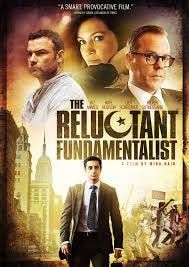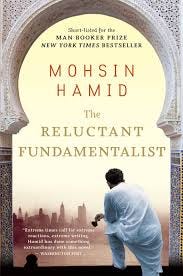Book Review: The Reluctant Fundamentalist
I first came across The Reluctant Fundamentalist not through the book, but the movie adaptation directed by Mira Nair. It was one of those serendipitous discoveries—a late evening of browsing, where the title itself seemed intriguing enough to warrant a watch. The film starred Riz Ahmed in the lead role of Changez Khan, a young Pakistani man grappling with identity, ambition, and belonging in a post-9/11 world. Liev Schreiber, Kate Hudson, and Kiefer Sutherland delivered strong supporting performances, with Schreiber playing an American journalist interviewing Changez under increasingly tense circumstances.
The movie was a compelling watch, striking a balance between being a taut political thriller and a deeply personal story. It wove together moments of high-stakes drama and emotional introspection, with Nair’s signature touch bringing vivid authenticity to both the bustling streets of Lahore and the towering corporate offices of New York. Ahmed’s performance stood out—his nuanced portrayal of Changez captured the character’s internal conflict, the tension between his personal aspirations and the shifting perceptions of his identity in a post-9/11 global landscape.
Intrigued by the narrative and its thematic depth, I decided to read Mohsin Hamid’s original novel. What I discovered was a work markedly different from the film in both structure and tone, but equally engaging. The novel, written as a dramatic monologue, features Changez recounting his story to an unnamed American visitor at a café in Lahore. This narrative device creates a sense of immediacy and intimacy that the film, with its intercutting timelines and additional characters, naturally diverges from.
While the movie expands on certain elements, including Changez’s romantic relationship with Erica (played by Kate Hudson), the novel is more understated, leaving much to the reader’s interpretation. The book’s Erica feels more like an emblem of Changez’s alienation and longing for acceptance in America, while the film dramatizes her as a fuller character. Similarly, the geopolitical context in the novel is subtle, embedded within Changez’s reflective tone, whereas the movie heightens the external stakes with a thriller-like urgency.
One notable difference is how the two versions handle their endings. The novel’s conclusion is deliberately ambiguous, leaving the reader with an unresolved tension that mirrors Changez’s complex relationship with his dual identities. The film, by contrast, opts for a more definitive resolution, tying up some narrative threads to cater to the medium’s demands for closure.
Ultimately, both the book and the movie are fascinating in their own right. The film offers a visually arresting and emotionally charged experience, while the book invites introspection, challenging the reader to engage with Changez’s perspective and the broader themes of cultural dislocation and global power dynamics. Together, they form a complementary pair—a rare case where both mediums enrich the other.
If you haven’t yet explored either, I would recommend starting with the book for its quiet power and then turning to the movie for its evocative adaptation. Both will leave you thinking long after you’ve finished.





